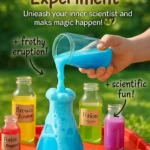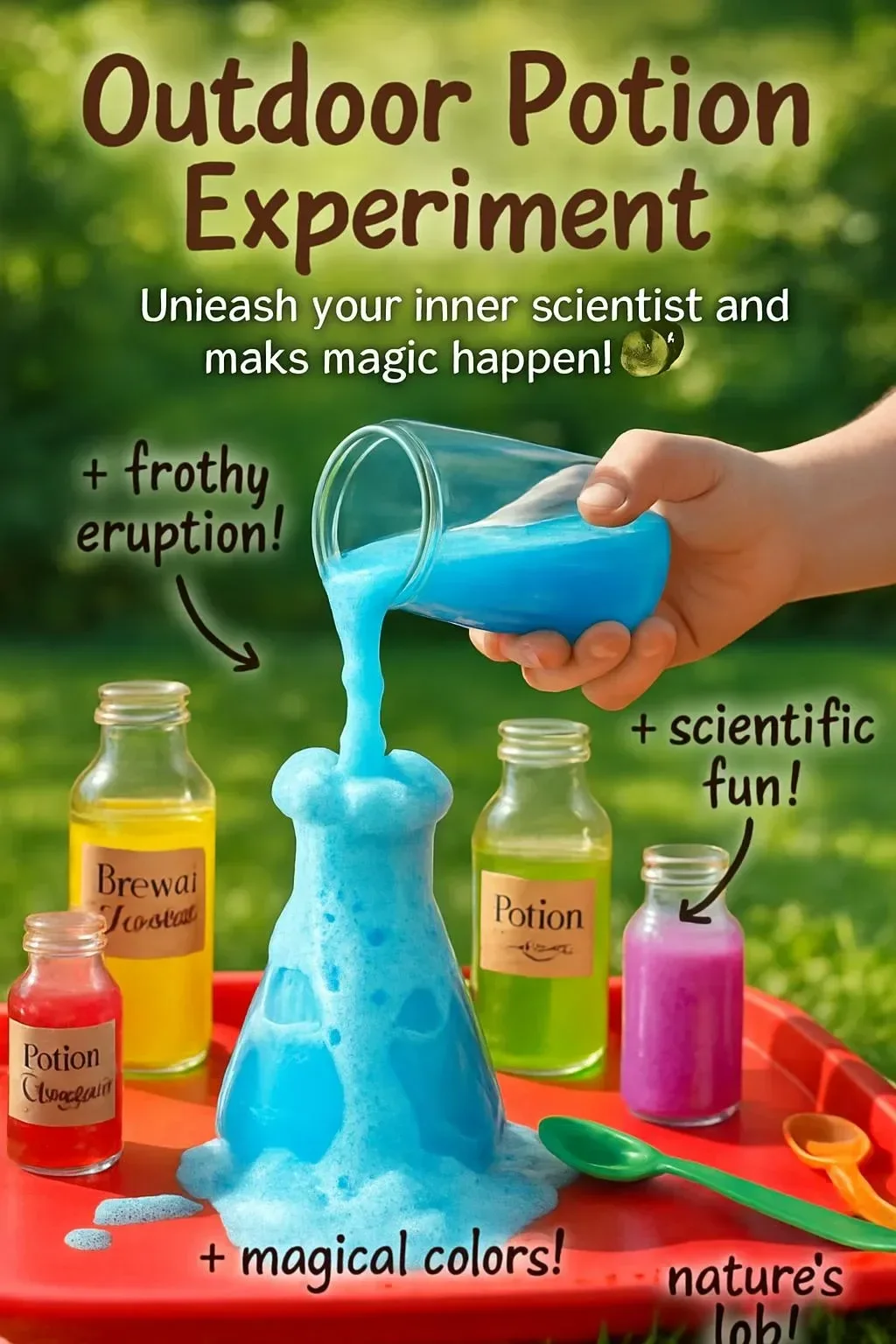Creating your own outdoor potion experiment is a delightful way to engage with nature while indulging your child’s curiosity and creativity. This hands-on activity not only encourages imaginative play but also fosters a love of exploration and learning about the environment. By gathering various natural ingredients, children can experiment with colors, scents, and textures, leading to hours of fun right in your backyard. This gastronomical adventure nurtures a connection to the outdoors and allows for sensory exploration through sight, smell, and touch. Preparation is simple, and the results are often surprising and entertaining, making it an ideal activity for families looking to spark creativity.
Why You’ll Love This Outdoor Potion Experiment:
- Engages children with hands-on learning.
- Encourages creativity and imaginative play.
- Utilizes natural materials, promoting environmental awareness.
- Provides sensory experiences through colors, smells, and textures.
- Risk-free, allowing exploration without mess indoors.
Materials:
- A selection of flowers (e.g., dandelions, violets)
- Leaves (e.g., mint, basil)
- Edible berries (e.g., strawberries, blueberries)
- Water
- Small containers or jars
- Wooden sticks or spoons for stirring
- Optional: food coloring for enhanced effects
Full Step-by-Step:
Step 1: Gather Ingredients
- Invite children to explore the backyard or garden and collect flowers, leaves, and berries. Discuss which plants are safe or edible.
Step 2: Prepare the Potion Containers
- Give each child a small container or jar. Explain this will be their potion vessel.
Step 3: Mix Ingredients
- Let children add their collected ingredients into their jars. Encourage them to experiment with combinations.
- Sensory Cue: Instruct them to notice the textures and smells of the items as they mix.
Step 4: Add Water
- Pour a small amount of water into each jar to cover the ingredients, creating a potion slurry.
Step 5: Stir and Observe
- Use wooden sticks or spoons to stir the mixture, observing the changes in colors and smells.
- Sensory Cue: Encourage children to inhale the different aromas and discuss their feelings.
Step 6: Let it Steep
- Allow the potions to sit for 15-30 minutes. This time can be spent playing nearby and observing any changes.
Step 7: Share and Play
- Once completed, let the children share their potions and discuss the choices they made.
Tips & Variations:
- Customize Colors: Use food coloring to enhance the visual appeal.
- Swap Materials: Experiment with different types of flowers or leaves for unique fragrances and appearances.
- Nature Themes: Create themed potions based on seasons or favorite stories.
Frequently Asked Questions:
Q: What types of flowers are safe to use?
A: Stick to commonly recognized edible flowers like dandelions, violets, and nasturtiums. Always check for toxicity before collecting.
Q: Can we use any leaves?
A: Focus on herbs like mint, basil, or sage, which are safe and scented. Avoid using unknown or non-edible leaves.
Q: How can we enhance the experience?
A: Consider adding a storytelling element where each child names their potion and describes its magical properties.
Q: What if it rains?
A: This experiment can be conducted indoors using potted plants or gathered materials beforehand to avoid weather interference.
Suggestions:
- Incorporate a scavenge hunt for ingredients and have children find specific types of plants.
- Create a nature journal to document their potion recipes and observations.
- Share the results with friends or family in a potion-tasting party.
Final Thoughts
This outdoor potion experiment provides a perfect blend of creativity, education, and outdoor activity. It offers children a unique opportunity to experiment with the natural world and ignite their imaginative spirits. We’d love to hear your experiences! Please share your potion creations in the comments below or let us know how you customized the experiment. Happy potion-making!
Print
Outdoor Potion Experiment
- Total Time: 30 minutes
- Yield: 2-4 servings
- Diet: N/A
Description
An engaging outdoor activity for children to explore nature while creating their own unique potions from natural ingredients.
Ingredients
- A selection of flowers (e.g., dandelions, violets)
- Leaves (e.g., mint, basil)
- Edible berries (e.g., strawberries, blueberries)
- Water
- Small containers or jars
- Wooden sticks or spoons for stirring
- Optional: food coloring
Instructions
- Gather Ingredients: Invite children to explore the backyard or garden to collect safe or edible plants.
- Prepare the Potion Containers: Provide each child with a small container or jar as their potion vessel.
- Mix Ingredients: Allow children to add their collected ingredients to their jars and encourage experimentation.
- Add Water: Pour a small amount of water into each jar to create a potion slurry.
- Stir and Observe: Use wooden sticks or spoons to stir the mixture and observe changes in color and smell.
- Let it Steep: Allow potions to sit for 15-30 minutes while children play and observe.
- Share and Play: Have children share their potions and discuss their creations.
Notes
Customize Colors with optional food coloring and experiment with different flowers or leaves for unique potions.
- Prep Time: 15 minutes
- Cook Time: 0 minutes
- Category: Creative Activity
- Method: Outdoor Activity
- Cuisine: N/A
Nutrition
- Serving Size: 1 participation
- Calories: Varies by ingredients used
- Sugar: Varies by ingredients used
- Sodium: Varies by ingredients used
- Fat: Varies by ingredients used
- Saturated Fat: Varies by ingredients used
- Unsaturated Fat: Varies by ingredients used
- Trans Fat: 0g
- Carbohydrates: Varies by ingredients used
- Fiber: Varies by ingredients used
- Protein: Varies by ingredients used
- Cholesterol: 0mg

